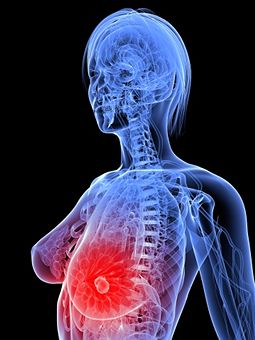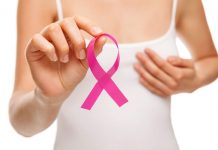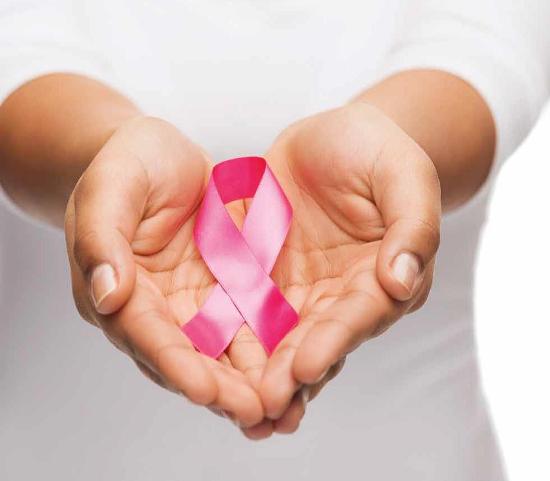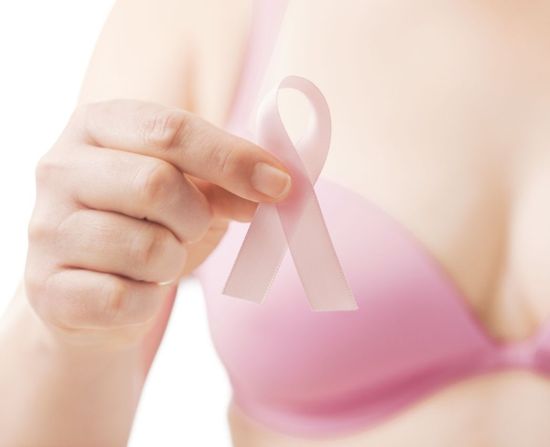Stage 1 breast cancer is a single region of cancer in the breast which does not measure more than 2 cm and is not spread outside the breast. It is essential to report any abnormality in your breast immediately as it could be a symptom of the initial stages of breast cancer.
Symptoms of Stage 1 Breast Cancer
 Tumor: One or more small tumors may be located on the breast, near the underarms or on either side, but not near the lymph nodes. This means that the cancer is not traveling to the other body parts.
Tumor: One or more small tumors may be located on the breast, near the underarms or on either side, but not near the lymph nodes. This means that the cancer is not traveling to the other body parts.- Sensitive Nipples: The nipples in stage 1 breast cancer go tender which may cause pain or a piercing sensation. Their shape may change or they may appear red or orange.
- Discharge: This is an easily identifiable symptom. The discharge from the people may differ in terms of color and consistency. It may be a clear reddish liquid due to the presence of blood, yellowish or a thick pus discharge.
- Pain: The arm on the side of the affected breast may pain like an aching discomfort.
Treatment for Stage 1 Breast Cancer
Mostly the first stage of breast cancer is cured with radiation and surgery. Other women can benefit from anti-hormonal therapy, radiation and surgery. Treatment after surgery is known as adjuvant therapy which reduces further risks of the cancer recurring.
Surgery: The initial treatment of stage 1 breast cancer comprises surgery and may be accompanied with radiation therapy. These local treatments may prevent recurrence, although the cancer that has already spread to other regions of the body cannot be cured. Such treatments are called systemic treatment and include anti-hormonal therapy and chemotherapy.
Surgery may include mastectomy and lumpectomy. Mastectomy refers to the removal of the entire breast, while lumpectomy refers only to the removal of the cancer and surrounding tissues. A lumpectomy relates to a higher rate of recurrence of cancer and this is why it is accompanied with radiation therapy, as the invisible cancer cells often get left behind. A combination of lumpectomy and radiation therapy is called breast-conserving therapy.
Radiation: Radiation therapy often accompanies lumpectomy. With the ERBT external beam radiation therapy, the radiation machine delivers a beam into the cancer. Radiation is carried out for 5 days a week for up to 6 weeks and reduces risks of recurrence especially when given after anti-hormonal therapy and lumpectomy.
Adjuvant Therapy: This is the additional treatment which is rendered after the surgery and radiation therapy. Adjuvant therapy aims to rid any invisible cancer cell which stays on after surgery. Adjuvant therapy for initial stage of breast cancer may involve anti-hormonal therapy, targeted therapy and chemotherapy.
Adjuvant therapy reduces chances of recurrence and improves the duration of survival. Here are certain benefits of adjuvant therapy:
Adjuvant Chemotherapy: Chemotherapy uses drugs to exterminate cancer cells. The combination of or single drugs are known as regimens. The drugs may be injected or orally taken.
Options of Chemotherapy: There are various chemotherapy regimens and drugs, of which the standard is the CMF or cyclophosphamide, methotrexate, and fluorouracil. It was first used to treat breast cancer in its early stages. CMF is generally given in 6 cycles over 4 to 6 months.
Taxanes: These are chemotherapy drugs including Taxol (paclitaxel) and Taxotere (docetaxel). Taxanes are usually combined with AC chemotherapy to increase the chances of cancer free survival in women who have advanced stages of the disease. Taxanes also improve chances of node negative breast cancer.
Adjuvant Anti-Hormonal Therapy: The growth of some cells can be slowed or prevented by reducing their exposure to estrogen, the female hormone. While estrogen prepares the body for puberty, pregnancy and menopause, it can also lead to the growth of certain cancer cells. The cells in the uterus, breasts and other organs grow with exposure to estrogen.
Estrogen receptors are present on the surface of these cells. The estrogen binds to the receptors and stimulates the growth of these cells. If the cells with estrogen receptors become cancerous, exposure to the hormone increases chances of growth of the cancer.
While anti-hormonal therapy may slow or prevent the growth of estrogen positive cancer cells in stage 1 breast cancer, reduction in the levels of estrogen may lead to brittle bones. Adjuvant antihormonal therapy has been said to benefit the ER-positive cancer cells. However, before receiving adjuvant therapy, always consult with your healthcare provider to assess the benefits and risks for your circumstances.






